 W
WThe economy of Albania went through a process of transition from a centralized economy to a market-based economy on the principles of the free market. Albania is an upper-middle-income country and a member of the North Atlantic Treaty Organisation (NATO), World Trade Organization (WTO), Organization for Security and Co-operation in Europe (OSCE), and Organization of the Black Sea Economic Cooperation (BSEC).
 W
WThe economy of Armenia grew by 7.6 per cent in 2019, the largest recorded growth since 2007, while between 2012 and 2018 GDP grew 40.7%, and key banking indicators like assets and credit exposures almost doubled.
 W
WThe economy of Austria is a well-developed social market economy, with the country being one of the fourteen richest in the world in terms of GDP per capita. Until the 1980s, many of Austria's largest industry firms were nationalised; in recent years, however, privatisation has reduced state holdings to a level comparable to other European economies. Labour movements are particularly strong in Austria and have large influence on labour politics. Next to a highly developed industry, international tourism is the most important part of the national economy.
 W
WThe economy of Azerbaijan has completed its post-Soviet transition into a major oil based economy, from one where the state played the major role. The transition to oil production led to remarkable growth figures as projects came online; reaching 26.4% in 2005 and 34.6% in 2006 before subsiding to 10.8% and 9.3% in 2008 and 2009 respectively. The real GDP growth rate for 2011 was expected at 3.7% but had dropped to 0.1%. Large oil reserves are a major contributor to Azerbaijan's economy. The national currency, the Azerbaijani manat, was stable in 2000, depreciating 3.8% against the dollar. The budget deficit equaled 1.3% of GDP in 2000.
 W
WThe economy of Belarus is the world's 72nd-largest economy by GDP based on purchasing power parity (PPP), which in 2019 stood at $195 billion, or $20,900 per capita.
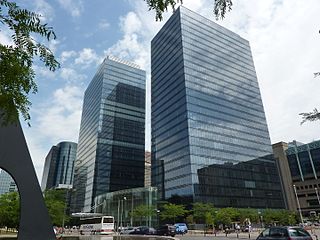 W
WThe economy of Belgium is a modern, capitalist economy that has capitalised on the country's central geographic location, highly developed transport network, and diversified industrial and commercial base. Belgium is the first country to undergo an industrial revolution on the continent of Europe in the early 19th century and has since developed an excellent transportation infrastructure of ports, canals, railways, and highways to integrate its industry with that of its neighbours. Industry is concentrated mainly in the populous Flanders in the north, around Brussels and in the two biggest Walloon cities, Liège and Charleroi, along the sillon industriel. Belgium imports raw materials and semi-finished goods that are further processed and re-exported. Except for its coal, which is no longer economical to exploit, Belgium has few natural resources other than fertile soils. Nonetheless, most traditional industrial sectors are represented in the economy, including steel, textiles, refining, chemicals, food processing, pharmaceuticals, automobiles, electronics, and machinery fabrication. Despite the heavy industrial component, services account for 74.9% of GDP, while agriculture accounts for only 1% of GDP.
 W
WThe economy of Bosnia and Herzegovina is a transitional economy with limited market reforms. Bosnia and Herzegovina declared independence from socialist Yugoslavia on 1 March 1992.
 W
WThe economy of Bulgaria functions on the principles of the free market, having a large private sector and a smaller public one. Bulgaria is an industrialised upper-middle-income country according to the World Bank, and is a member of the European Union (EU), World Trade Organization (WTO), Organization for Security and Co-operation in Europe (OSCE) and Organization of the Black Sea Economic Cooperation (BSEC). The Bulgarian economy has experienced significant growth (416%) starting from $13.15 billion and reaching estimated gross domestic product (GDP) of $67.9 billion or $171.185 billion, GDP per capita of $24,595, average gross monthly salary of 1,349 leva, and net average monthly salary of $1,505 (2019). The national currency is the lev, pegged to the euro at a rate of 1.95583 leva for 1 euro. The lev is the strongest and most stable currency in Eastern Europe.
 W
WThe economy of Croatia is a developing high-income service based economy with the tertiary sector accounting for 60% of total gross domestic product (GDP). After the collapse of Communism, Croatia went through a process of transition to a market-based economy in the 1990s, but its economy suffered badly during the Croatian War of Independence. After the war, the economy began to improve. Before the financial crisis of 2007–08 the Croatian economy grew at 4–5% annually, incomes doubled, and economic and social opportunities dramatically improved.
 W
WThe economy of Cyprus is a high-income economy as classified by the World Bank, and was included by the International Monetary Fund in its list of advanced economies in 2001. Erratic growth rates in the 1990s reflected the economy's vulnerability to swings in tourist arrivals, caused by political instability on the island and fluctuations in economic conditions in Western Europe.
 W
WThe economy of the Czech Republic is a developed export-oriented social market economy based in services, manufacturing, and innovation, that maintains a high-income welfare state and the European social model. The Czech Republic participates in the European Single Market as a member of the European Union, and is therefore a part of the economy of the European Union, but uses its own currency, the Czech koruna, instead of the euro. It is a member of the OECD. The Czech Republic ranks 13th in inequality-adjusted human development and 14th in World Bank Human Capital Index ahead of countries such as the United States, the United Kingdom or France. It was described by The Guardian as "one of Europe’s most flourishing economies".
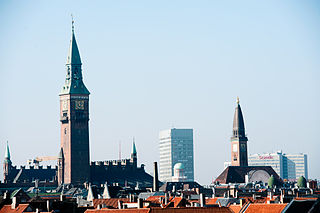 W
WThe economy of Denmark is a modern mixed economy with comfortable living standards, a high level of government services and transfers, and a high dependence on foreign trade. The economy is dominated by the service sector with 80% of all jobs, whereas about 11% of all employees work in manufacturing and 2% in agriculture. Nominal gross national income per capita was the tenth-highest in the world at $55,220 in 2017. Correcting for purchasing power, per capita income was Int$52,390 or 16th-highest globally. Income distribution is relatively equal, but inequality has increased somewhat during the last decades, however, due to both a larger spread in gross incomes and various economic policy measures. In 2017, Denmark had the seventh-lowest Gini coefficient of the 28 European Union countries. With 5,822,763 inhabitants, Denmark has the 39th largest national economy in the world measured by nominal gross domestic product (GDP) and 60th largest in the world measured by purchasing power parity (PPP).
 W
WThe economy of Estonia is an advanced economy and the country is a member of the European Union and of the eurozone. Estonia's economy is heavily influenced by developments in the Finnish and Swedish economies.
 W
WThe economy of Finland is a highly industrialised, mixed economy with a per capita output similar to that of other western European economies such as France, Germany and the United Kingdom. The largest sector of Finland's economy is services at 72.7 percent, followed by manufacturing and refining at 31.4 percent. Primary production is 2.9 percent.
 W
WThe economy of France is highly developed and free-market-oriented. It is the world's seventhth-largest economy by 2019 nominal figures and the tenth-largest economy by PPP. As of September 30, 2020, it is the 3rd largest economy of Europe, after the economy of Germany and the United Kingdom.
 W
WThe economy of Georgia is an emerging free market economy. Its gross domestic product fell sharply following the collapse of the Soviet Union but recovered in the mid-2000s, growing in double digits thanks to the economic and democratic reforms brought by the peaceful Rose Revolution. Georgia continued its economic progress since, "moving from a near-failed state in 2003 to a relatively well-functioning market economy in 2014". In 2007, the World Bank named Georgia the World's number one economic reformer, and has consistently ranked the country at the top of its ease of doing business index.
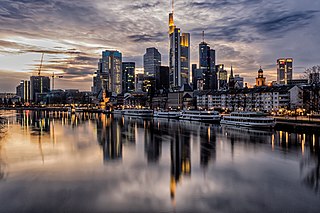 W
WThe economy of Germany is a highly developed social market economy. It has the largest national economy in Europe, the fourth-largest by nominal GDP in the world, and fifth by GDP (PPP). In 2017, the country accounted for 28% of the euro area economy according to the IMF. Germany is a founding member of the European Union and the Eurozone.
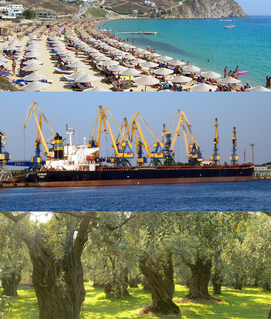 W
WThe economy of Greece is the 51st largest in the world with a nominal gross domestic product (GDP) of $209.853 billion per annum. In terms of purchasing power parity, Greece is the world's 53rd largest economy, at $336.486 billion per annum. As of 2019, Greece is the sixteenth-largest economy in the 27-member European Union. According to IMF figures for 2019, Greece's GDP per capita was $19,570 at nominal value and $31,572 at purchasing power parity.
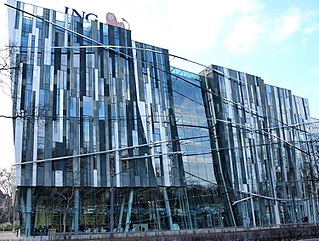 W
WThe economy of Hungary is a high-income mixed economy, ranked as the 10th most complex economy according to the Economic Complexity Index. Hungary is a member of the Organisation for Economic Co-operation and Development (OECD) with a very high human development index and a skilled labour force, with the 13th lowest income inequality in the world. The Hungarian economy is the 57th-largest economy in the world with $265.037 billion annual output, and ranks 40th in the world in terms of GDP per capita measured by purchasing power parity. Hungary has an export-oriented market economy with a heavy emphasis on foreign trade; thus the country is the 35th largest export economy in the world. The country had more than $100 billion of exports in 2015, with a high trade surplus of $9.003 billion, of which 79% went to the EU and 21% was extra-EU trade. Hungary's productive capacity is more than 80% privately owned, with 39.1% overall taxation, which funds the country's welfare economy. On the expenditure side, household consumption is the main component of GDP and accounts for 50% of its total, followed by gross fixed capital formation with 22% and government expenditure with 20%. In 2009 Hungary, due to strong economic difficulties, had to request the help of the IMF for about €9 billion.
 W
WThe economy of Iceland is small and subject to high volatility. In 2011, gross domestic product was US$12bn, but by 2018 it had increased to a nominal GDP of US$27bn. With a population of 350,000, this is $55,000 per capita, based on purchasing power parity (PPP) estimates. The financial crisis of 2007–2010 produced a decline in GDP and employment that has since been reversed entirely by a recovery aided by a tourism boom starting in 2010. Tourism accounted for more than 10% of Iceland's GDP in 2017. After a period of robust growth, Iceland's economy is slowing down according to an economic outlook for the years 2018–2020 published by Arion Research in April 2018.
 W
WThe economy of the Republic of Ireland is a highly developed knowledge economy, focused on services in high-tech, life sciences, financial services and agribusiness, including agrifood. Ireland is an open economy and ranks first for high-value foreign direct investment (FDI) flows. In the global GDP per capita tables, Ireland ranks 4th of 186 in the IMF table and 4th of 187 in the World Bank ranking.
 W
WThe economy of Italy is the third-largest national economy in the European Union, the eighth-largest by nominal GDP in the world, and the 12th-largest by GDP (PPP). Italy is a founding member of the European Union, the Eurozone, the OECD, the G7 and the G20; it is the tenth-largest exporter in the world, with $632 billion exported in 2019. Its closest trade ties are with the other countries of the European Union, with whom it conducts about 59% of its total trade. The largest trading partners, in order of market share, are Germany (12.5%), France (10.3%), the United States (9%), Spain (5.2%), the United Kingdom (5.2%) and Switzerland (4.6%).
 W
WThe economy of Kosovo is a transition economy. Kosovo was the poorest province of the former Yugoslavia with a modern economy established only after a series of federal development subsidies in 1960s and 1970s.
 W
WThe economy of Latvia is an open economy in Northern Europe and is part of the European Union's (EU) single market. Latvia is a member of the World Trade Organization (WTO) since 1999, a member of the European Union since 2004, a member of the Eurozone since 2014 and a member of the OECD since 2016. Latvia is ranked the 14th in the world by the Ease of Doing Business Index prepared by the World Bank Group. According to the Human Development Report 2011, Latvia belongs to the group of very high human development countries. Due to its geographical location, transit services are highly developed, along with timber and wood-processing, agriculture and food products, and manufacturing of machinery and electronic devices.
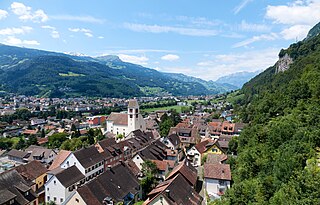 W
WThe economy of Liechtenstein is based roughly equally on services and industry, with a small but significant agricultural sector. The country participates in a customs union with Switzerland and uses the Swiss franc as its national currency. It imports more than 85% of its energy requirements. Liechtenstein has been a member of the European Free Trade Association (EFTA) since 1991. It also has been a member of the European Economic Area (EEA) since May 1995 and participates in the Schengen Agreement for passport-free intra-European travel.
 W
WThe economy of Lithuania is the largest economy among the three Baltic states. Lithuania is a member of the European Union and its GDP per capita is the highest in the Baltic states. Lithuania belongs to the group of very high human development countries and is a member of WTO and OECD.
 W
WThe economy of Luxembourg is largely dependent on the banking, steel, and industrial sectors. Luxembourgers enjoy the highest per capita gross domestic product in the world. Luxembourg is seen as a diversified industrialized nation, contrasting the oil boom in Qatar, the major monetary source of the southwest Asian state.
 W
WThe economy of Malta is a highly industrialised, service-based economy. It is classified as an advanced economy by the International Monetary Fund and is considered a high-income country by the World Bank and an innovation-driven economy by the World Economic Forum. It is a member of the European Union and of the eurozone, having formally adopted the euro on 1 January 2008.
 W
WThe economy of Moldova is one of the poorest in Europe. Moldova is a landlocked Eastern European country, bordered by Ukraine on the east and Romania to the west. It was a former Soviet republic.
 W
WThe economy of Monaco is reliant on tourism and banking. Monaco, situated on the French coast of the Mediterranean Sea, is a popular resort, attracting tourists to its casino and pleasant climate.
 W
WThe economy of Montenegro is currently in a process of transition, as it navigates the impacts of the Yugoslav Wars, the decline of industry following the dissolution of the Socialist Federal Republic of Yugoslavia, and economic sanctions imposed by the United Nations.
 W
WThe economy of the Netherlands is the 17th largest in the world in 2019 according to the World Bank and International Monetary Fund. Its GDP per capita was estimated at roughly $48,860 in the fiscal year 2017/18 which makes it one of highest-earning nations in the world. Between 1996 and 2000, annual economic growth (GDP) averaged over 4%, well above the European average of 2.5% at the time. Growth slowed considerably in 2001–05 as part of the global economic slowdown. 2006 and 2007 however showed economic growth of 3-4% per annum. The Dutch economy was hit considerably by the financial crisis of 2007–2008 and the ensuing European sovereign-debt crisis.
 W
WThe economy of North Macedonia has become more liberalized, with an improved business environment, since its independence from Yugoslavia in 1991, which deprived the country of its key protected markets and the large transfer payments from Belgrade. Prior to independence, North Macedonia was Yugoslavia's poorest republic. An absence of infrastructure, United Nations sanctions on its largest market the Federal Republic of Yugoslavia, and a Greek economic embargo hindered economic growth until 1996.
 W
WThe economy of Norway is a highly developed mixed economy with state-ownership in strategic areas. Although sensitive to global business cycles, the economy of Norway has shown robust growth since the start of the industrial era. The country has a very high standard of living compared with other European countries, and a strongly integrated welfare system. Norway's modern manufacturing and welfare system rely on a financial reserve produced by exploitation of natural resources, particularly North Sea oil. According to United Nations data for 2018, Norway together with Luxembourg, and Switzerland are the only three countries in the world with a GDP per capita above US$70,000 that are neither island nations nor microstates.
 W
WThe economy of Poland is an industrialized, mixed economy with a developed market that serves as the sixth largest in the European Union (EU) and the largest among the former Eastern Bloc members of the EU. Since 1988, Poland has pursued a policy of economic liberalization and its economy was the only one in the EU to avoid a recession through the 2007–08 economic downturn. As of 2019 the Polish economy has been growing steadily for the past 28 years, a record high in the EU and only surpassed by Australia in the world economy. GDP per capita at purchasing power parity has grown on average by 6% p.a. over the last 20 years, the most impressive performance in Central Europe resulting in the country increasing its GDP seven-fold since 1990.
 W
WThe economy of Portugal is ranked 42nd in the World Economic Forum's Global Competitiveness Report for 2017–2018.
 W
WThe economy of Romania is a fast developing, high-income mixed economy with a very high Human Development Index and a skilled labour force, ranked 12th in the European Union by total nominal GDP and 7th largest when adjusted by purchasing power parity.
 W
WThe economy of Russia is an upper-middle income mixed and transition economy. It is the fifth-largest national economy in Europe, the eleventh-largest in the world in terms of nominal GDP, and the sixth-largest by purchasing power parity.
 W
WThe economy of San Marino is a developed free-market economy focused around industries such as tourism, banking and the manufacture of ceramics, clothing, fabrics, furniture, paints, spirits, tiles, and wine. Taken together, the manufacturing and financial sector make up more than half of the national GDP. The primary sector contribution to the GDP of the country is marginal, with the main agricultural products being wine and cheeses. In addition, San Marino sells collectible postage stamps to philatelists.
 W
WThe economy of Serbia is a service-based upper middle income economy with the tertiary sector accounting for two-thirds of total gross domestic product (GDP) and functions on the principles of the free market. Nominal GDP in 2020 is projected to reach $51.999 billion, which is $7,497 per capita, while GDP based on purchasing power parity (PPP) stood at $130.675 billion, which is $18,840 per capita.
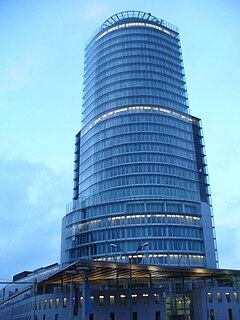 W
WThe economy of Slovakia is based upon Slovakia becoming an EU member state in 2004, and adopting the euro at the beginning of 2009. Its capital, Bratislava, is the largest financial centre in Slovakia. As of 2018 (1.Q.), the unemployment rate was 5.72%.
 W
WThe economy of Slovenia is developed and the country enjoys a high level of prosperity and stability as well as above average GDP per capita by purchasing power parity at 83% of the EU28 average in 2015. Nominal GDP in 2018 is 42.534 billion EUR, nominal GDP per capita (GDP/pc) in 2018 is EUR 21,267. The highest GDP/pc is in central Slovenia, where the capital city Ljubljana is located, which is part of the Western Slovenia statistical region, which has a higher GDP/pc than eastern Slovenia.
 W
WThe economy of Spain is the world's fourteenth-largest by nominal GDP as well as one of the largest in the world by purchasing power parity. The country is a member of the European Union, the Organization for Economic Co-operation and Development and the World Trade Organization. Spain has a capitalist mixed economy. The Spanish economy is the sixth-largest in Europe behind Germany, United Kingdom, France, Italy and Russia as well as the fourth-largest in the eurozone based on nominal GDP statistics. In 2019, Spain was the fifteenth-largest exporter in the world and the fourteenth-largest importer. Spain is listed 25th in the United Nations Human Development Index and 30th in GDP per capita by the World Bank, therefore it is classified as a high income economy and among the countries of very high human development. According to The Economist, Spain has the world's 10th highest quality of life.
 W
WThe economy of Sweden is a developed export-oriented economy aided by timber, hydropower, and iron ore. These constitute the resource base of an economy oriented toward foreign trade. The main industries include motor vehicles, telecommunications, pharmaceuticals, industrial machines, precision equipment, chemical goods, home goods and appliances, forestry, iron, and steel. Traditionally a modern agricultural economy that employed over half the domestic workforce, today Sweden further develops engineering, mine, steel, and pulp industries that are competitive internationally, as evidenced by companies like Ericsson, ASEA/ABB, SKF, Alfa Laval, AGA, and Dyno Nobel.
 W
WThe economy of Switzerland is one of the world's most advanced free market economies. The service sector has come to play a significant economic role, particularly the Swiss banking industry and tourism. The economy of Switzerland ranks first in the world in the 2015 Global Innovation Index and third in the 2020 Global Competitiveness Report. According to United Nations data for 2016, Switzerland is the third richest landlocked country in the world after Liechtenstein and Luxembourg, and together with the latter and Norway the only three countries in the world with a GDP per capita (nominal) above US$70,000 that are neither island nations nor ministates.
 W
WThe economy of Turkey is an emerging market economy as defined by the International Monetary Fund. Turkey is among the world's developed countries according to the CIA World Factbook. Turkey is also defined by economists and political scientists as one of the world's newly industrialized countries. Turkey has the world's 20th-largest nominal GDP, and 13th-largest GDP by PPP. The country is among the world's leading producers of agricultural products; textiles; motor vehicles, transportation equipment; construction materials; consumer electronics and home appliances.
 W
WThe economy of Ukraine is an emerging free market economy. It grew rapidly from 2000 until 2008 when the Great Recession began worldwide and reached Ukraine as the 2008-2009 Ukrainian financial crisis. The economy recovered in 2010 and continued improving until 2013. From 2014 to 2015, the Ukrainian economy suffered a downturn, with the GDP in 2015 being slightly above half of its value in 2013. In 2016, the economy again started to grow. By 2018, the Ukrainian economy was growing rapidly, and reached almost 80% of its size in 2008.
 W
WThe economy of the United Kingdom is a highly developed social market and market-orientated economy. It is the fifth-largest national economy in the world measured by nominal gross domestic product (GDP), ninth-largest by purchasing power parity (PPP), and twenty second-largest by GDP per capita, comprising 3.3% of world GDP.
 W
WThe economy of Vatican City is supported financially by the sale of stamps, coins, medals, and tourist mementos as well as fees for admission to museums and publication sales. The Vatican City state employed 4,822 persons in 2016.